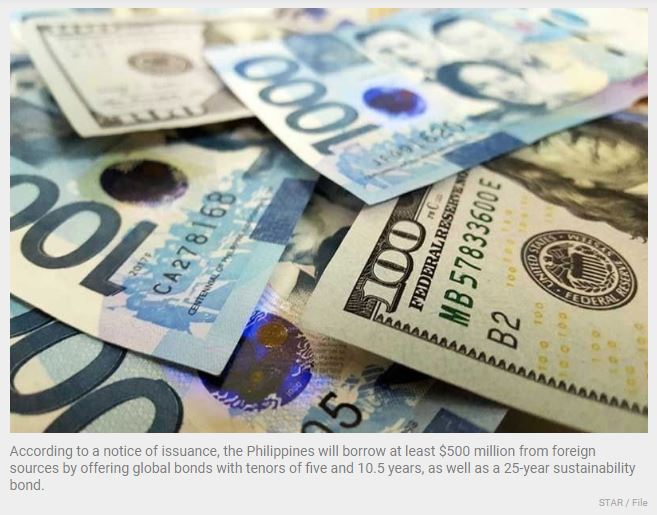Philippines: Government debt pile rises in February — Treasury
MANILA, Philippines — The national government’s liabilities inched up in February, with an analyst expecting a heavier debt load in the coming years as the Marcos Jr. administration sticks to its growth targets that would require higher spending to hit.
Data released by the Bureau of the Treasury showed that the country’s outstanding liabilities inched up 0.4% month-on-month to P13.75 trillion in February. Of the total debt stock, 68.7% came from domestic sources while 31.3% came from foreign creditors.
The debt pile’s ascent came amid the depreciation of the peso and the issuance of domestic security in February.
Experts have been warning about the impact of a growing debt pile for the Philippines. The country’s debt stock climbed at the onset of the pandemic, due in part to the Duterte administration’s borrowing spree to fund its pandemic response.
A plump debt stock would mean more taxpayers’ funds are needed for debt servicing in the coming years. The situation also means that the Marcos Jr. administration would run the government and institute reforms with a very tight fiscal space.
Nicholas Antonio Mapa, senior economist at ING Bank in Manila, made the case for more borrowings in the coming years. The Marcos Jr. administration revised its growth aspirations to 6-7% this year, while keeping target of 6.5-8% from 2024-2028.
“With the Philippines running budget deficits, we will likely see the overall debt continue to rise over the next few years. Despite projected improvements in revenue collection, the government will likely need to resort to borrowing to shoulder expenditure to sustain economic growth,” he said in an emailed commentary.
Broken down, domestic borrowings inched up 0.6% month-on-month to P9.44 trillion in February. The expansion came as the national government borrowed P55.88 billion in the same month, as was the peso’s depreciation which pushed levels up P1.34 billion.
External debt retreated 0.1% month-on-month to P4.31 trillion. Foreign loan payments (P21.15 billion) and forex swings (P32.32 billion) increased the debt stock in February.
Despite this, Mapa pointed out that the public should train it sights on the country’s debt-to-gross domestic product ratio. The country’s debt-to-GDP ratio settled at 60.9% in 2022, breaching the 60% threshold deemed manageable for emerging market economies.
“Should growth outstrip the growth of new debt, we could see a decline in the debt-to-GDP ratio which would indicate that the economy is able to outgrow the high debt issue,” he added. – Ramon Royandoyan
Source: https://www.philstar.com/business/2023/03/30/2255628/government-debt-pile-rises-february-treasury


 English
English




